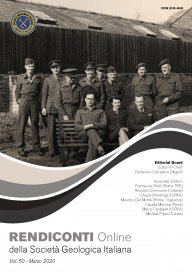
Geology and the Allied liberation of Normandy in World War II: British military applications of geology in France 1944-1945 contrasted with Italy 1943-1945
Edward P.F. Rose
Honorary Research Fellow, Department of Earth Sciences, Royal Holloway, University of London, Egham, Surrey TW20 0EX, UK - Tel: +44 (0)1425 279124
Corresponding author e-mail: ted.rose@earth.oxon.org
Volume: 50/2020
Pages: 56-66
Abstract
The Allied liberation of Normandy in northern France began on D-Day, 6 June 1944, with the greatest amphibious assault in world history. Planning was assisted by re-printing local geological maps and by early appointment of British military geologists to the headquarters staff at Army Group level: Major (later Lieutenant- Colonel) W.B.R. King succeeded by Captain (later Major) F.W. Shotton. Their priority tasks were to help guide the choice of the invasion area within Normandy; map natural hazards to cross-beach trafficability; determine sites suitable for rapid construction of temporary airfields; compile groundwater prospect maps and guide well drilling to ensure adequate supplies of potable water; guide the quarrying of stone, notably for the repair or enhancement of main supply routes; and compile ‘soil’ maps, potentially to indicate suitability for cross-country trafficability. As in Italy from 1944, in northern Europe from 1945 another geologist staff officer (Major D.R.A. Ponsford) was employed to focus on ‘works’ in rear areas whilst the geologist first appointed focused on ‘operations’ ahead. Wartime experience provided the basis postwar for publication of a Royal Engineers’ military geological textbook and the foundation of a small pool of geologist officers in the British reserve army that continues to the present day.
Keywords
Get Full Text